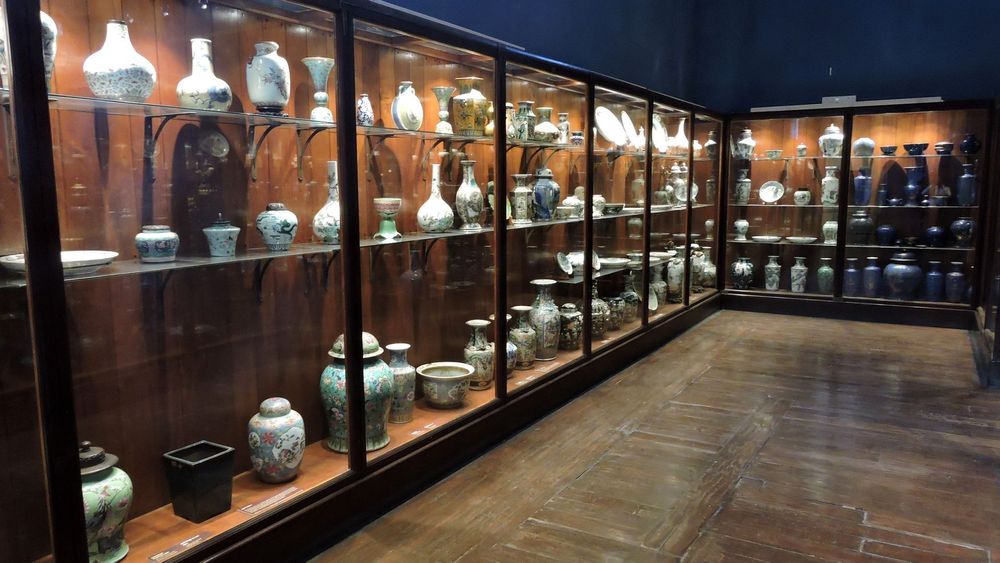Explore the Chhatrapati Shivaji Maharaj Museum in Mumbai

Hitaishi Majumder | Live the World
November 23, 2022
The city of Mumbai, flanked by the **Arabian Sea **on the west, is the economic capital of India. Being a port city, Mumbai has always been in the thick of things when it comes to business affairs and has thus been frequented by people belonging to all walks of life since time immemorial. This logistical occurrence led to a significant cultural exchange which in turn resulted in diverse art and architecture. No wonder Mumbai boasts an abundance of **heritage buildings **designed in varied styles. One such building that you must **explore **is the Chhatrapati Shivaji Maharaj Vastu Sangrahalaya, a museum with a collection of over 50,000 artifacts. The Chhatrapati Shivaji Maharaj Museum is an architectural marvel and a designated Grade I heritage building of the city.
History of the Chhatrapati Shivaji Maharaj Vastu Sangrahalaya

The Chhatrapati Shivaji Maharaj Vastu Sangrahalaya is the primary museum in Mumbai and was built to commemorate the visit of the then Prince of Wales, who later became King George V, to the city in 1905. The Prince himself laid the foundation stone of the museum which was initially known as the Prince of Wales Museum. It was later renamed in honor of the great Maratha warrior-king, Chhatrapati Shivaji Maharaj.

George Wittet, the Scottish architect who designed the most famous Mumbai landmark, the Gateway of India, designed the museum in Indo-Saracenic style. The stunning facade of the palatial building resembles that of the** Golconda Fort** in Hyderabad, while the dome resembles the Gol Gumbaz in Bijapur, the mausoleum of King Muhammad Adil Shah of the Adilshahi dynasty. The finial is modelled after the Taj Mahal in Agra, one of the seven wonders of the world. Even though the construction of the public museum was completed in 1914, it opened its doors for the public in 1922 as the building was being used as a military hospital during the First World War.
Inside the Chhatrapati Shivaji Maharaj Vastu Sangrahalaya

The beautiful latticework that allows natural light inside, the arched pavilion, the slender pillars that hold the gigantic intersecting arches, together form an eclectic pattern and add to the splendor of the structure. This museum is an ode to Indian art, architecture and natural history. It houses historical relics dating back to ancient civilizations of the Indian subcontinent- the** Indus valley civilization** (3300 – 1300 BCE), the Mughal dynasty (1526 – 1857 CE), the Maratha Confederacy (1645 CE) and many more! Look out for the personal armor of the Mughal Emperor Akbar in the arms and armor gallery. The other galleries that you should explore are the Nepal-Tibet and Europe galleries which are treasure troves of valuable paintings. In my opinion, the most beautiful section in the museum is the miniature section that exhibits impeccable Mughal, Rajput and Chinese porcelain miniatures. Also, take a look around the textiles section that is home to the finest Maratha weaves which were a part of the fortune of** Nana Phadnavis**, the most influential minister of the Maratha empire.
How and when to visit the Chhatrapati Shivaji Maharaj Vastu Sangrahalaya

The Chhatrapati Shivaji Maharaj International Airport is located only 22 kilometres away from the museum. You will easily find autorickshaws or cabs outside the airport that will ferry you to the museum. If you want to travel by Mumbai’s famous local trains, the nearest station from the museum is the Chhatrapati Shivaji Terminus located only 1.8 kilometres away. Alternatively, you will find public buses to reach the museum from any part of Mumbai. If you travel by road, just make sure to be patient because Mumbai is infamous for traffic jams. The museum remains open from 10:15 AM to 5 PM on all days of the week, except Monday.
The Gateway of India is located only 600 metres away from the **Chhatrapati Shivaji Maharaj Museum **in Mumbai. After you are done exploring the museum, take a stroll in the expansive garden that surrounds it, and then walk down to the **Gateway of India **and enjoy the cool breeze from the **Arabian Sea. **
Book a nearby experience
Let our AI assistant help plan your trip
Create a personalized plan and share it with your friends
Never run out of things to do! Sign up to our newsletter today, what are you waiting for?
 Making travel planning easy.
Making travel planning easy.